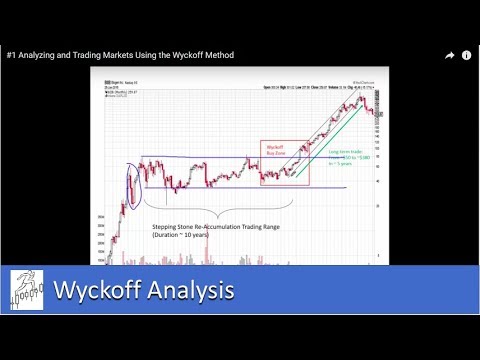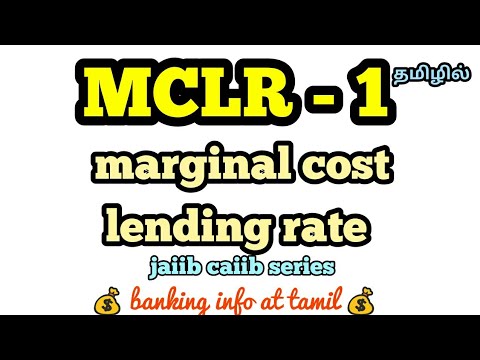Maximizing the probability of a perfect hedge

To create a perfect hedge, the correlation coefficient of two securities must be -1. This condition is a very rare occurrence, as the majority of securities pairs have coefficients that cluster around 0, indicating that the relative change in value between the two is random. As the correlation coefficient between two securities approaches -1, the effectiveness of using one security as a hedge against the performance of the other increases. As we can see in the above table, the refinery’s loss in the spot market is offset by the profit in the financial market. The profit in the spot market is offset by the loss in the financial market.
I-Bonds: Pros and Cons of Investing – Kiplinger’s Personal Finance
I-Bonds: Pros and Cons of Investing.
Posted: Mon, 07 Aug 2023 22:55:00 GMT [source]
Basis is another important component of hedge slippage that must be considered. The plants will earn revenue off the nodal power price (the generation bus) while hedges are contracted at liquid trading hubs, which represent baskets of nodal prices within a region. Due to congestion and line losses, the nodal prices often differ from the hub prices, resulting in differing payoffs for the physical asset and the hedges even when volumes may be perfectly aligned. Other risks such as operational risk (e.g., forced outages), weather risk (e.g., plants operating less efficiently due to extreme heat), and others can contribute additional slippage to a hedging strategy as well. There’s no such thing as “risk free” when it comes to managing energy assets, but the right analytical framework can help you understand the financial risk specific to your portfolio and take data-driven steps to mitigate it. A futures contract for the underlying asset may not be available or the delivery date may not be optimal.
Popular Perfect Hedges
Whether the farmer decides to under-or over-hedge depends on expected prices. If prices are expected to fall, then it benefits the farmer to over-hedge, since she will receive a guaranteed price for the entire herd. On the other hand, if prices are expected to rise, then it makes sense to under-hedge, since, then, the 20,000 pounds not covered by a futures contract can be sold for the higher market price. A common example of a near-perfect hedge would be an investor using a combination of held stock and opposing options positions to self-insure against any loss in the stock position.
- Both oils are used extensively in food processing, so they are closely correlated in price.
- If the business entered a futures contract for the foreign exchange rate of $1.30 per euro, then it can be guaranteed that it will receive $1,625,000 in December regardless of the exchange rate.
- Consequently, spot market prices are more volatile than the futures prices and the producer is subject to price risk until December.
- There is really no reason to completely remove all the risk out of an investment, as neutering risk has a similar impact on rewards.
- An example of a near-perfect hedge is an investor who uses a combination of held stock and opposing options positions to insure against loss in the stock position.
Remember, if producer doesn’t close the financial position, they have to deliver the crude oil to Cushing, OK, Hub. A perfect hedge is a position that eliminates the risk of an existing position or one that eliminates all market risk from a portfolio. Rarely achieved, a perfect hedge position has a 100% inverse correlation to the initial position where the profit and loss from the underlying asset and the hedge position are equal.
Traders do this by establishing a trading band for the underlying investments they are trading. By finding assets with low correlation or inverse correlation, investors ensure smoother portfolio returns. If the business entered a futures contract for the foreign exchange rate of $1.30 per euro, then it can be guaranteed that it will receive $1,625,000 in December regardless of the exchange rate. A perfect hedge is a position undertaken by an investor that would eliminate the risk of an existing position, or a position that eliminates all market risk from a portfolio. In order to be a perfect hedge, a position would need to have a 100% inverse correlation to the initial position. The ideal would be a perfect hedge and removal of all risk, but in reality, only a partial coverage of exposure, or risk, is normally possible.
Perfect & Imperfect Hedge
In a perfect hedge, gain and loss in one market are offset by loss and gain in the other market, reducing or eliminating risk exposure. In the framework of continuous-time, Itô processes models for financial markets, we study the problem of maximizing the probability of an agent’s wealth at time T being no less than the value C of a contingent claim with expiration time T. We then show how to modify this approach to solve the problem in a market with partial information, the one in which we have only a prior distribution on the vector of return rates of the risky assets. Finally, the same problem is solved in markets in which the wealth process of the agent has a nonlinear drift. These include the case of different borrowing and lending rates, as well as “large investor” models.
LOCAL HISTORY: Gilbert’s Topiary Zoo – Local.News
LOCAL HISTORY: Gilbert’s Topiary Zoo.
Posted: Tue, 08 Aug 2023 05:28:38 GMT [source]
A perfect hedge is an investment vehicle designed to mitigate the financial risk inherent in a portfolio of investments and/or in the normal course of business. Another drawback of standardization of contracts covering commodities is that the quality and kind of the commodity must be specified, so that commodities not covered by any futures contract cannot be hedged directly by using futures. However, these commodities can be covered by non-regular hedges, such as cross-hedges and ratio hedges. There are many strategies to hedge an investor’s stocks through futures, call-and-put options, and convertible bonds, but they all incur a cost.
Perfect Hedge
Finding pro forma with every perfect hedge requires very little research, but the idea is that they’re less linked to financial markets than other places where you can pack your money. The reason there is still residual risk even after being “100% hedged” is that there is typically “slippage” between the payoffs of the hedge contracts and the assets they’re hedging. This sort of slippage is common and usually unavoidable, and it can occur due to a wide variety of reasons. The images below provide an example of simulated annual gross margin for a baseline portfolio consisting of several thermal generating assets.
The hedges in this portfolio are standard over-the-counter swaps (i.e., forward contracts), which are linear instruments with no optionality. So if the value of the futures contract declines substantially during its term, the hedger may be subject to margin calls. Assume a refinery is planning to buy the same amount of crude oil in the same spot market and the refinery wants to hedge the December price and its profit against the price fluctuations. The refinery is said to be “short” the commodity and having the short position in the spot market.

As we can see in the above table, the profit in the spot market is offset by the loss in the financial market. In this case, the loss in the spot market is offset by the profit in the financial market. For those who are still interested in volatility but want a “light” option that simplifies the asset class and requires less understanding of the intricacies of the market, there are various products that are appropriate.
Table of Contents
But buying products that have weathered simulation, such as storm windows, can help mitigate your risk of injury. You have requested a machine translation of selected content from our databases. This functionality is provided solely for your convenience and is in no way intended to replace human translation.
- It’s easy to be carried away with financial engineering solutions and be creative, but that should be left for the long side of the portfolio.
- Basis is another important component of hedge slippage that must be considered.
- This condition is a very rare occurrence, as the majority of securities pairs have coefficients that cluster around 0, indicating that the relative change in value between the two is random.
- These include the case of different borrowing and lending rates, as well as “large investor” models.
In attempting a perfect hedge, investors and traders establish a range of probability where both the worst and best outcomes are acceptable. As such, those investors who do go this route will find that a position of around 10 percent of the value of the average equity portfolio offers unparalleled downside protection. Technical models are available to calculate the optimal exposure of volatility to a given portfolio, depending on its characteristics in terms of geography, sector, market cap and other exposures. Although a perfect hedge eliminates risk in a theoretical world, hedging in the real world has risks. If the price of corn drops to $4.20 a bushel, then the farmer will receive $5,000 less without the futures contract. With the futures contract, a loss on the corn is compensated by the increase in the value of the futures contract.
The other advantage of selecting near delivery months is their greater liquidity — more contracts are traded as the delivery time approaches. Investors commonly attempt to achieve a perfect hedge through options, futures, and other derivatives for defined periods rather than as ongoing protection. “The biggest barriers to entry to volatility as an asset class are knowledge and scale,” said one London-based hedge fund manager. Understand what financial risk is by learning the financial risk definition. I am not suggesting it is easy, but if the framework incorporates these fundamental elements, it adds objectivity to a decision which is highly subjective. While there is no perfect hedge, there is, in fact, a near-perfect hedge framework, which doesn’t guarantee favorable results.
Likewise, jewelry makers do not have to worry about the cost of gold or silver, since they can easily adjust their prices to reflect any changes. A perfect hedge is a type of hedge that eliminates all the risks from a certain portfolio. High-risk investments typically offer high returns in order to attract investors, and hedging is often used to make a high-risk investment more secure while sacrificing a portion of the potential profit. To secure a perfect hedge, the cost to the investor might be too high, however. Expected profits may be eliminated or reduced to an unacceptably low level by the cost of the hedge.

A more perfect hedge can be achieved with a forward contract since all the terms of the contract are negotiable. However, forward contracts have their own problems, including the need to find a counterparty willing to accept the terms of the contract. Moreover, there could be substantial credit risk because a counterparty may be unable or unwilling to fulfill the contract. Futures contracts solve these problems by standardizing the terms of the contract and by having the exchange of the futures contract serve as a counterparty to both the long and the short position. But for many in the market, futures will not serve as a perfect hedge — hence, various strategies must be considered to achieve the best hedge possible. A crude oil producer is planning to sell 500,000 barrels of crude oil in the cash market in December (they are said to be “long” the commodity).
In order to hedge, the refinery has to buy 500 December futures contracts (1000 bbl each) in the financial market and sell them by the end of November (closing position). This is called buyer’s hedge or long hedge, which is opposite to the seller’s hedge. However, the crude oil producer is intending to sell the product in the spot market and not interested in delivering the crude oil at the Cushing, OK, Hub. And remember that all December futures contracts must be financially settled at the end of November according to the rules of the exchange. So, by the end of November, the producer must buy back the contracts in order to balance their financial position (close the position).
This list includes liquid assets like cash and short-term notes and less liquid investments like gold and real estate. It takes very little research to find issues with all of these perfect hedges, but the idea is that they are less correlated with financial markets than other places you can park your money. Hence, hedging makes sense for those businesses producing a product or providing a service that must be sold at market prices, but requires a minimum to cover their costs.
Investopedia does not provide tax, investment, or financial services and advice. The information is presented without consideration of the investment objectives, risk tolerance, or financial circumstances of any specific investor and might not be suitable for all investors. It’s easy to be carried away with financial engineering solutions and be creative, but that should be left for the long side of the portfolio.
